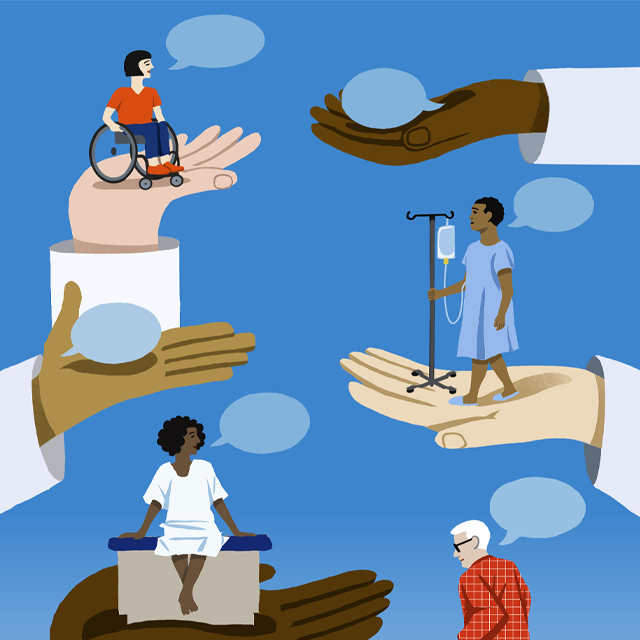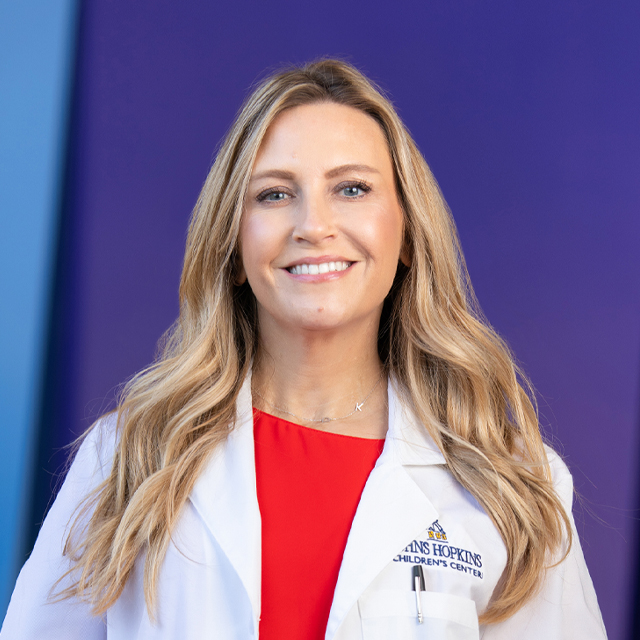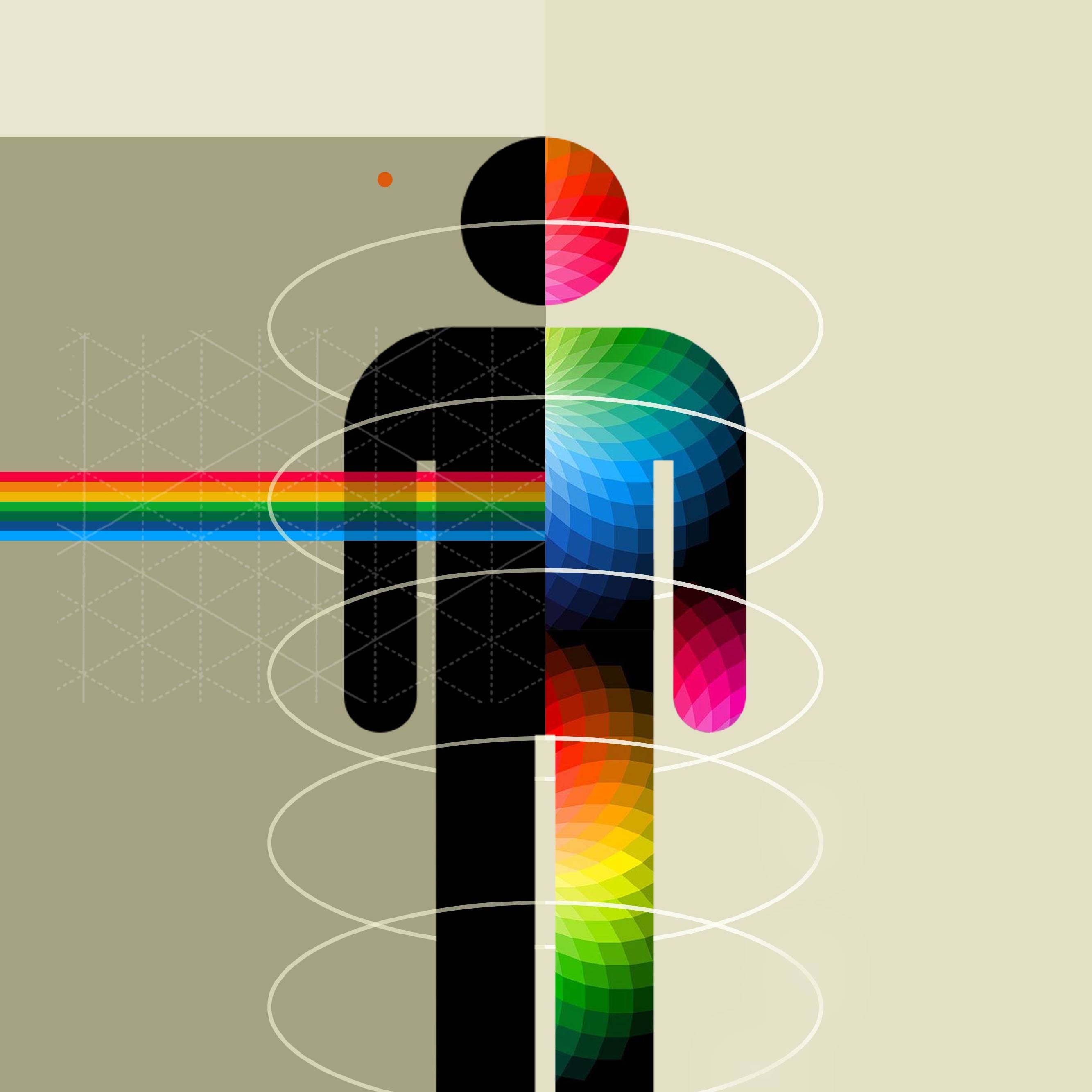Celina McHugh passed one biannual screening after another following the removal of a melanoma from her leg in 2001, but her luck ran out after 13 years. In a cruel coincidence, she first felt the lump in her groin hours before another scheduled screening.
“I knew deep down before I got there,” she says. Still, her heart sank when the news of cancer’s reappearance in her body became official. She underwent a radical lymph node dissection in 2014, followed by a grueling rehab that McHugh compares to starting from scratch in learning to use one of her legs.
Surgeries like that leave some patients cancer-free, but another tumor appeared in her lower back. As a nurse, she had a good grasp on what words like metastatic and stage 4 might mean.
“It felt like a death sentence,” she says. She and her husband, Jim, have twin children. Chelsea and Michael were just hitting their 20s. Would she be around to see them thrive in adulthood and perhaps start families of their own?
Her oncologist, Evan Lipson of the Johns Hopkins Kimmel Cancer Center, talked McHugh off that ledge by telling her about a class of immunotherapy drugs, checkpoint inhibitors, that had been on the scene for just three years by that point in 2014. The promise of those early years has blossomed since into a game-changing success story. Patients with metastatic melanoma who once had a 10% to 15% chance of surviving five years now hit that benchmark at a rate of 50%, Lipson reports.
“Do we still have a long way to go? You bet,” Lipson says. “But are we helping more patients? There’s no doubt about that.”
McHugh stands today among the ranks of those survivors. But she’s paid a price too. In addition to her oncology checkups, she’s on regular-visit schedules with a rheumatologist, a dermatologist and an endocrinologist. She’s suffered through horrible rashes, painful arthritis and short-term memory loss, among other problems.
“It’s been quite an ordeal,” she says. Make no mistake, however: She’s grateful for the dawn of each new day. “It’s really not that hard to remember the alternative: I should be dead by now.”
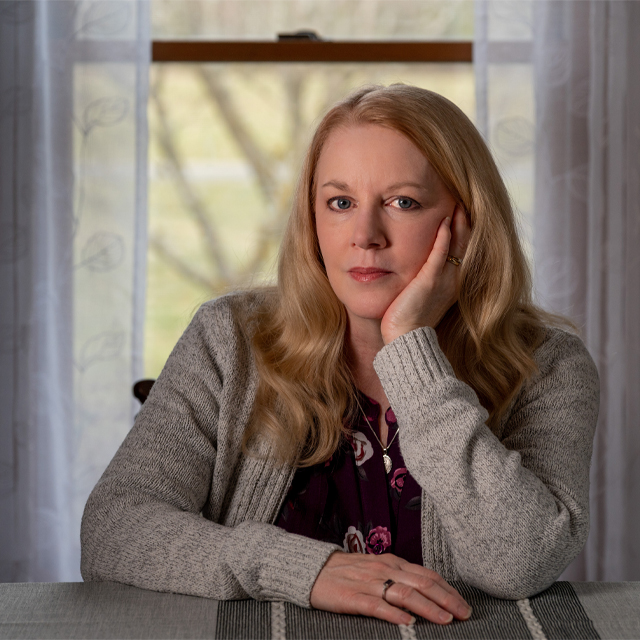
Grateful for the immunotherapy that saved her life, Celina McHugh continues to cope with an array of challenging side effects.
Balancing Act
The economist Thomas Sowell penned a famous aphorism: “There are no solutions, only trade-offs.” He meant that as a warning to public policy experts tempted by the goal of perfection. Every initiative comes with downsides, Sowell argued, so it’s best to be ready at the outset to get about the hard work of balancing the inevitable pluses and minuses.
So it goes in cancer care. For all the talk in recent decades of “moonshots,” “magic bullets” and “cures,” the on-the-ground reality is Sowellesque, with the good news of treatment gains tempered by the appearance of toxicities and health risks. Balancing such trade-offs is essential work on the cutting edge of cancer care.
The modern age of immunotherapy arrived in the 1990s with FDA approval for the cytokine interleukin-2, a naturally occurring protein that boosts the production of cancer-fighting white blood cells. The strategy has taken off over the last 15 years, with those checkpoint inhibitors leading a pack of techniques that also includes oncolytic virus therapy, T cell therapy and cancer vaccines.
The checkpoint inhibitors work by interrupting a protein-binding relationship between cancer cells and immune cells that would otherwise signal the body to tamp down its attack on cancer cells. The strategy is working wonders not only in metastatic melanoma but also across more than 50 other cancer types. The percentage of patients whose cancer shrinks or disappears across those types ranges between 15% and 60%. One measure of the excitement stirred up by this still-unfolding success story: More than 3,000 clinical trials involving checkpoint inhibitors are now underway.
A good number of these studies are looking to elucidate the mechanisms involved in adverse reactions. The problems that arise during and after immunotherapy range from minor to life-threatening and run the biological gamut — lung damage, hormone imbalances, bladder control, osteoporosis, hearing loss, stroke risks, vision problems, peripheral neuropathy and more.
“Immunotherapy is kind of like opening Pandora’s box,” says Meghan Berkenstock, an ophthalmologist at the Johns Hopkins Wilmer Eye Institute who helps patients deal with ocular immunotherapy toxicities. “You’re unleashing the immune system to go after cancer cells, right? But other cells in your body look like cancer cells because they have the same receptor.”
Direct attacks on healthy cells by an unleashed immune system cause some of those problems, while others are tied in with an overproduction of inflammatory cytokines brought on by therapy. Still other adverse events remain biological mysteries.
McHugh’s experience is typical in the sense that most patients receiving immunotherapy experience some degree of adverse events. But the problems she ran into were more serious and more numerous than the norm. Most adverse events fall in a mild to moderate range that leaves patients able to handle the tasks of day-to-day living, even if they don’t feel 100%.
“Serious immune-mediated toxicities that lead to chronic issues are not common, but they occur frequently enough that we discuss the possibility with every patient before starting immunotherapy,” Lipson says.

“Different institutions are approaching this in a variety of ways, but what has become clear, not just here at Hopkins but around the country, is that there’s a real need for these kinds of [immune-related toxicity] programs.”
—Laura Cappelli
Tremendous Tool for Oncologists
The balancing act involved in helping patients manage adverse events landed in front of rheumatologist Laura Cappelli in 2015. She was a fellow at the Johns Hopkins Arthritis Center when a trickle of unusual calls turned into a steady stream. Oncologists wanted help in managing joint pain and swelling experienced by immunotherapy patients. Cappelli soon learned that colleagues in other specialties were fielding those calls too.
“What we found is an incredible need among oncologists for specialists across various specialties who could work on the problems their patients were having,” she says.
Cappelli teamed up with thoracic oncologist Jarushka Naidoo (who has since moved on to Ireland’s RCSI Cancer Center) to launch an immune-related toxicity team. At its outset in 2017, the IR-tox team ranked among the first initiatives in the country aiming to connect oncologists with the multidisciplinary expertise their patients needed.
What began as a rudimentary database of provider names across half a dozen specialties soon evolved into a multifaceted virtual tool housed on a listserv that’s monitored by 30-plus physicians, nurse practitioners, pharmacists and other providers across more than a dozen specialties. By entering basic data about a patient’s situation into a template, oncologists get the help they need to quickly triage clinical questions. The approach soon drew interest from other institutions. Johns Hopkins IR-tox team members have consulted with Massachusetts General, Vanderbilt and other academic medical centers looking to address the same issues.
“It’s been a tremendous tool for oncologists,” Lipson says, “and it all came about thanks to some visionaries here at Hopkins who realized very early on that it was going to take a village to start managing all the complexities that can arise with these adverse events.”
Currently, the IR-tox team fields more than 300 inquiries a year. Straightforward cases are often handled via online discussion, but others present red flags that necessitate appointments for diagnosis and care outside the oncology setting. The clinicians who sign on to the team commit themselves to developing and sharing immunotherapy-related knowledge, to seeing patients in need on extremely short notice, and to looking for ways to study treatment options and measure results.
“Every place hasn’t taken the same path — different institutions are approaching this in a variety of ways,” Cappelli says. “But what has become clear, not just here at Hopkins but around the country, is that there’s a real need for these kinds of programs.”
One early measure of the IR-tox team’s success came in a 2018 review of 122 referrals at Johns Hopkins. The response time in every case was less than 24 hours. Oncologists reported finding the team’s recommendations useful 100% of the time. In 74% of cases, providers reported changing treatment strategies based on IR-tox team recommendations. Cappelli reports that data gathering is well underway in several specialties to measure the effectiveness of treatment options in ways that might help identify clinical best practices going forward.
Infinitely Complex
Celina McHugh’s therapy with the checkpoint inhibitors nivolumab and ipilimumab started two days before Christmas in 2014. Her first bit of collateral damage appeared almost immediately — a skin rash that caused itching so extreme that it could leave her unable to go to work and manage daily tasks. She found some relief by way of treatments with various steroid levels and three different lotions, but those gains were intermittent and temporary.
“It’s hard to describe how bad it was,” McHugh says. “Maybe imagine getting bitten all at once by 100,000 mosquitoes?”
She endured that rash as best she could until running up against the maximum recommended dose of steroids while in immunotherapy. Lipson put her treatment on a temporary pause. On resuming, he altered the drug mix, going all in on nivolumab and nixing the ipilimumab. The rash subsided, but now she struggled with exhaustion. She knew she’d hit her limit when she could barely summon up the energy to make it through an eagerly anticipated class reunion.
“It felt like this terrible flu that would never go away,” she says.
McHugh saw Lipson a few days after that reunion. He diagnosed her with hypophysitis, a dangerous inflammation of the pituitary gland, and hypothyroidism, which can lead to heart disease and exacerbate joint pain. He had McHugh admitted to the hospital on the spot. Five days passed before her condition stabilized.
This time, the immunotherapy pause lasted three months. In the end, McHugh made it halfway through a planned two-year course of treatment. Lipson told her that he saw enough progress with her cancer to recommend calling a halt to the treatments. At first, McHugh objected.
“I was heartbroken when he said we should stop,” she says. “I wanted to keep fighting through the full two years. That was supposed to give me the best chance, right? This felt like giving up.”
But Lipson was adamant about what the Sowellesque balancing act called for in her case. He warns his patients against looking at pauses and early stoppages as signs of defeat. Immunotherapy doesn’t always work the same way as traditional medications that need to be administered at regular intervals or they’ll stop working.
“In some patients, once the immune system has been activated, it’s a bit like pushing a shopping cart down a hill,” Lipson says. “If you give it one good nudge, sometimes that shopping cart is going to keep rolling whether you keep pushing or not.”
The time had arrived to see if that was the case for McHugh. “I can’t keep doing this to you, Celina,” Lipson told her. “It’s ruining your quality of life.”
Bringing Clarity
As a new faculty member who hadn’t yet settled on a research focus, Berkenstock was intrigued by a call for recruits at the Wilmer Eye Institute in the early days of the IR-tox team. She’s been getting three to four referrals a week since. Roughly one in 100 immunotherapy patients experiences ocular problems, Berkenstock says, but that number is a moving target.
The balancing act here presents one surprise after another. All that clinical research activity means new drugs and drug combinations are coming online every month. In addition, treatments initially approved for one cancer type often migrate quickly in off-label fashion into treating other types of cancer, where the prevalence of toxic side effects may vary.
“Things are evolving and changing at an incredible pace,” Berkenstock says. “It’s constant learning in this field, like going to medical school every day.”
Dry eyes and uveitis are the most common ocular problems, she notes. Orbit issues and optic neuritis arise with some frequency too. The majority of cases respond well to treatment. Over five years with the IR-tox team, Berkenstock has seen just two patients who went blind and two more whose vision problems necessitated treatment pauses. Most of her IR-tox patients come from the mid-Atlantic region, with referrals arriving both from inside Johns Hopkins and outside oncologists. Every case serious enough for a referral, she notes, “requires a lot of coordination with the oncologist.
“We’re pretty well-established now here at the medical center,” she adds. “But it’s different with community oncologists. They’ll tell me, ‘I’ve never seen this before.’ But when their patient gets here, I’m like, ‘I saw two cases like this last week.’ The patients are so relieved when they hear that.”
Berkenstock is working to close that information gap. Her IR-tox team work led to an appointment with the National Comprehensive Cancer Network (NCCN), an alliance of 1,700 clinicians that develops clinical practice guidelines. As the only NCCN ophthalmologist working on immune-related toxicities, she gives frequent educational presentations around the country. She has a pair of 2023 talks lined up in South America.
Dry eye is a main focus in Berkenstock’s research portfolio. The condition can make routine activities like driving and reading challenging, and sometimes impossible, but the standard treatment, artificial tears, hasn’t worked well for her immunotherapy patients.
“What’s in the literature isn’t true in my experience,” she says. In a multicenter study, she is tracking dry-eye patients prospectively through the course of checkpoint inhibitor therapy. Her hope is that the results will help drum up interest in new or alternative therapies for those who develop dry eye.
“This is the last-chance line of cancer therapy for many patients, which is why it’s so important to try to make sure that they have the best vision and the best quality of life possible during what might turn out to be their last few months of life,” says Berkenstock. “I hope not, of course, but it might.”
The problems that Berkenstock sees at Wilmer appear in unpredictable fashion. Patients with a history of ocular issues can sail through immunotherapy, while others with no such background end up in her office. A key goal in checkpoint inhibitor research across various cancer types is to identify biomarkers that can predict which patients are likely to develop which toxicities, but no such tool is available at this point.
Things work differently in rheumatology. There, Cappelli often sees patients with preexisting arthritis before they start on immunotherapy, in an effort to bolster their health status on the front end. This is especially important, she says, in autoimmune conditions like rheumatoid and psoriatic arthritis. The same is true with autoimmune conditions in other specialties, she adds, ticking off the examples of Crohn’s disease and ulcerative colitis.
In her research, Cappelli is looking to elucidate the biological mechanisms and clinical characteristics involved in a range of rheumatologic adverse events, including myositis and vasculitis, in addition to inflammatory arthritis. That work of bringing clarity where uncertainty now reigns is critical for IR-tox team members across many specialties.
Which patients should specialists see in advance of treatment? Which patients are most likely to experience toxicities? Which diagnostic tests should be standard during treatment, and how often should they be administered? How long, and at what intervals, should testing continue after treatment?
“Patients are at highest risk for complications during immunotherapy, but problems do arise afterward,” Cappelli says. “There are no hard-and-fast rules yet about when we can safely stop monitoring for those things.”
Additional uncertainties arise because of the way all clinical research is conducted. Patients with potentially complicating preexisting conditions, such as those with autoimmune diseases, are generally excluded from trials. Once treatments are approved, however, oncologists are eager to try and help those same health-compromised patients. That leaves everyone flying blind to a degree on the health risks that might arise. In addition, while the focus in clinical trials of immunotherapy drugs is quite rightly on side effects that rank as severe and life-threatening, that means drugs can come onto the scene with scant information available about smaller problems that still have big quality-of-life impacts.
“That’s the biggest challenge now,” Cappelli says. “This constant introduction of new drugs has us always in that process of figuring out the toxicities of each new arrival.”
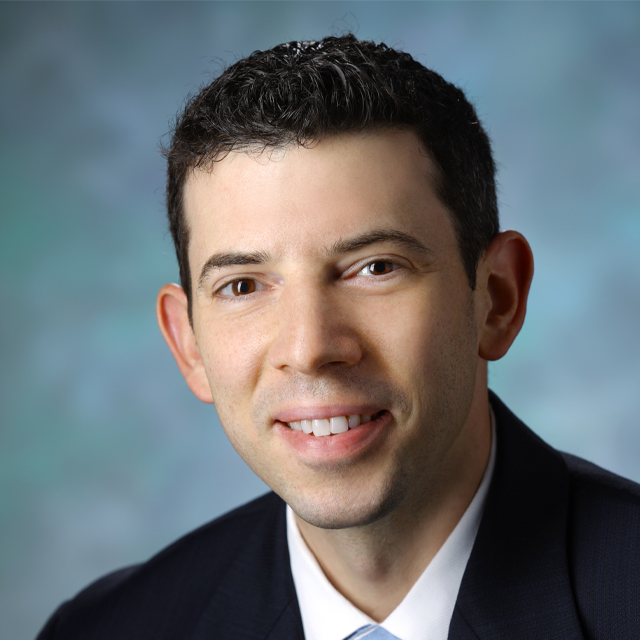
“When the immune system is activated, it can ramp up against normal parts of the body as well as the cancer. Going forward, it’s our job as clinicians and scientists and investigators to shift the risk-benefit more to the benefit — to leave the rest of the body alone.”
—Evan Lipson
A New Normal
McHugh may not have all her old energy back, but she feels less exhausted these days. She is working full time at a fertility clinic in Milford, Delaware. Her most daunting current challenge is the arthritis. On bad days, the pain in the balls of her feet makes walking a challenge. But the medications prescribed by Cappelli have made things better, McHugh says. No longer does she struggle to get back up after bending down to reach for something in the refrigerator, for example.
Her short-term memory problems persist as well. Every once in a while, when behind the wheel of her car, she’ll find herself uncertain of where she is or where she’s headed. “I’ve learned to wait on that, just keep driving,” she says. “In a few minutes, it’ll come to me: ‘Oh yeah, I’m on my way to work.’” She takes pills five times a day. She carries an emergency injection kit at all times in case she goes into adrenal crisis.
“If you think about the way these medications work, what Celina and other patients go through makes a lot of sense,” Lipson says. “When the immune system is activated, it can ramp up against normal parts of the body as well as the cancer. Going forward, it’s our job as clinicians and scientists and investigators to shift the risk-benefit more to the benefit — to leave the rest of the body alone.”
“In some ways, what I have now is not like a normal person’s life,” McHugh says, “but I’m happy with it and so very grateful.” Her twins are on the brink of 30, and she is still around to see that they’re doing just fine. McHugh and her husband, Jim, are closer than ever, in part because of all the time they spent together traveling back and forth to Johns Hopkins. The support of her family has been a priceless blessing.
McHugh thinks often of friends she met in cancer support groups who went through immunotherapy but didn’t make it. Those memories come with a challenging emotional mix of sadness and guilt, but they also fuel her sense of determination to make the most of her good fortune.
“Every time I have a scan now,” she says, “my feeling is, ‘I need this to come out well because I have a lot to do yet in life.’”

